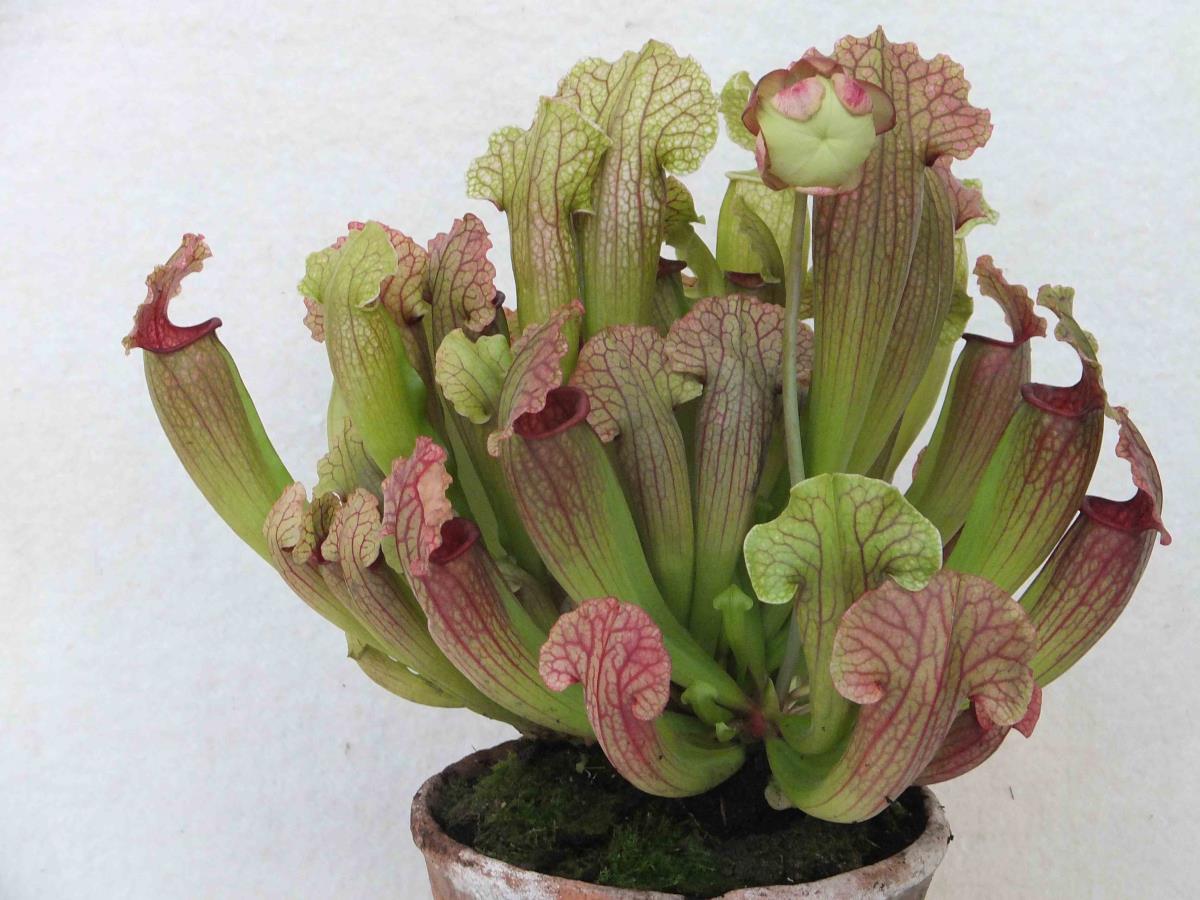
Any cool greenhouse or conservatory will be enhanced with a pot or two of Sarracenia Pitcher plants. Exotic and strange looking, the fantastically wrought tubular vases of their leaves out perform most flowers with striations, netting and mottling in purples, reds, greens and yellows.
Added to their striking coloration these lidded pitchers appear almost alien with a most curious form and function. For these tubular leaves are wrought with the sole purpose of luring in flies which slip on the sides and fall to the bottom where they drown in a pool of sticky digestive juices.
I have dissected many and counted a hundred or more house-fly bodies and estimated many hundreds of smaller fly bodies, plus an occasional wasp or moth, in each and every pitcher. And a plant throws dozens. Their fly catching ability is obviously no myth, the bigger species the more so, it’s rumoured there exist plants capable of swallowing the family pet, however many could certainly manage a fat beetle or even a small frog.
Anyway I set their pots amongst my indoor fruit bushes just to trap the fruit flies. Now the pitchers may have a scent to attract the flies but this is usually indiscernible and no annoyance to us. However it’s best to remove the flowers when these appear as although these are strangely beautiful they pong much more and attract legions more flies to the vicinity. Of course, being insectivorous plants these are natives of wet boggy places and cool temperate swamps, most come from North American wetland woods, and so really need a low fertility, peat based compost, acid and free of lime. Indeed Sarracenias must solely be given pure rain water free of anything, especially never add any feed as this may kill them, they get their nutrition from the flies.
I know some object to using peat but this is exactly what this plant needs, if you wish to avoid peat try a fifty fifty mixture of well decayed leaf mould and sharp sand. Do not use most peat free composts, I killed several specimens trying. Many Sarracenia species are not very hardy and will be killed by a hard winter. Cool frost free conditions suit them, dappled shade and never too hot or dry. You could start these from seed, and for years I’ve been trying to hybridise these as they produce only a few large seeds easy to handle, but they’re hard to get fertile and germinate!
Anyway fortunately plants of the easier species are widely available commercially because of their educational interest and eye appeal. And although a tad expensive these are well worth the price simply because of their immediate impact.










